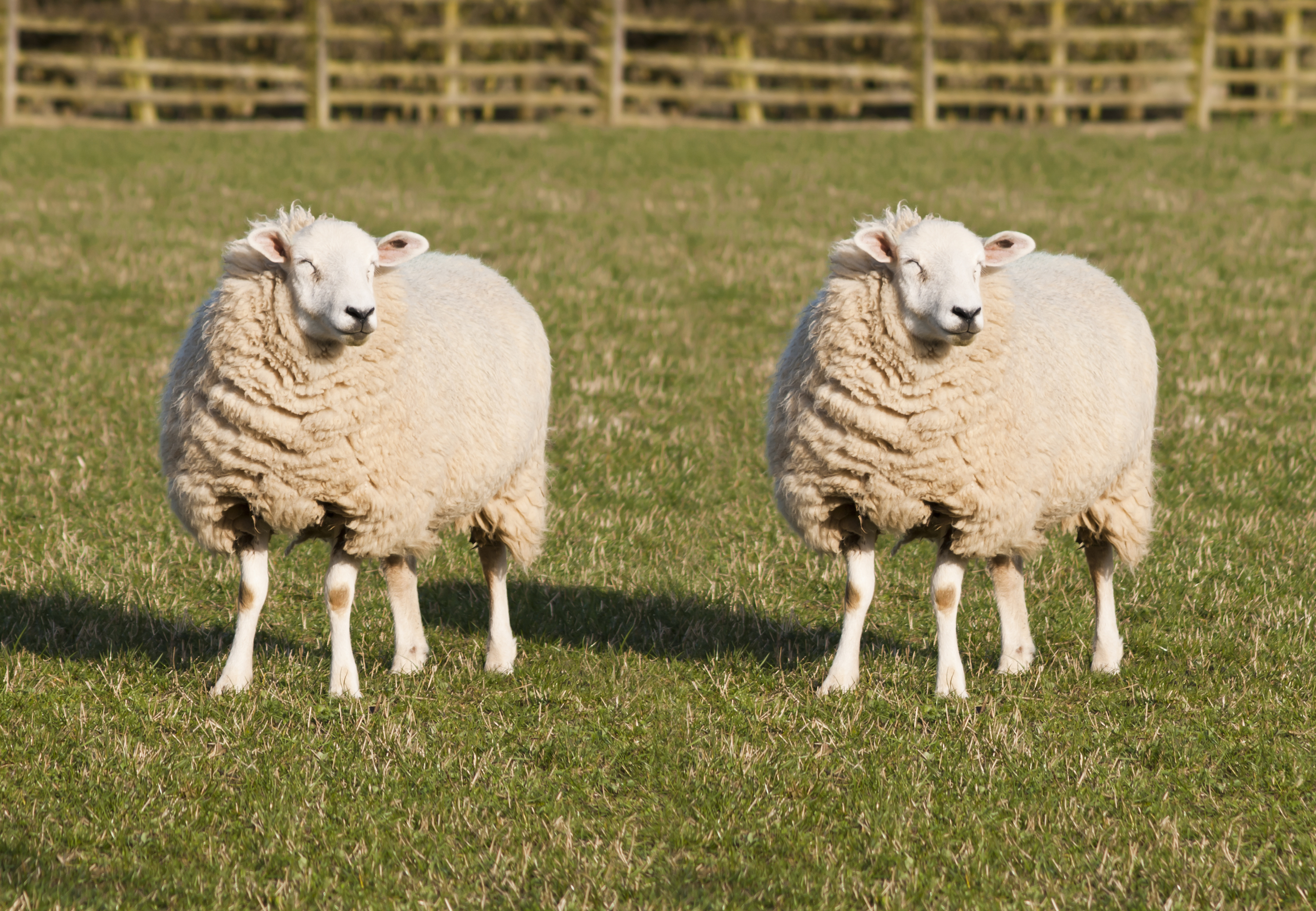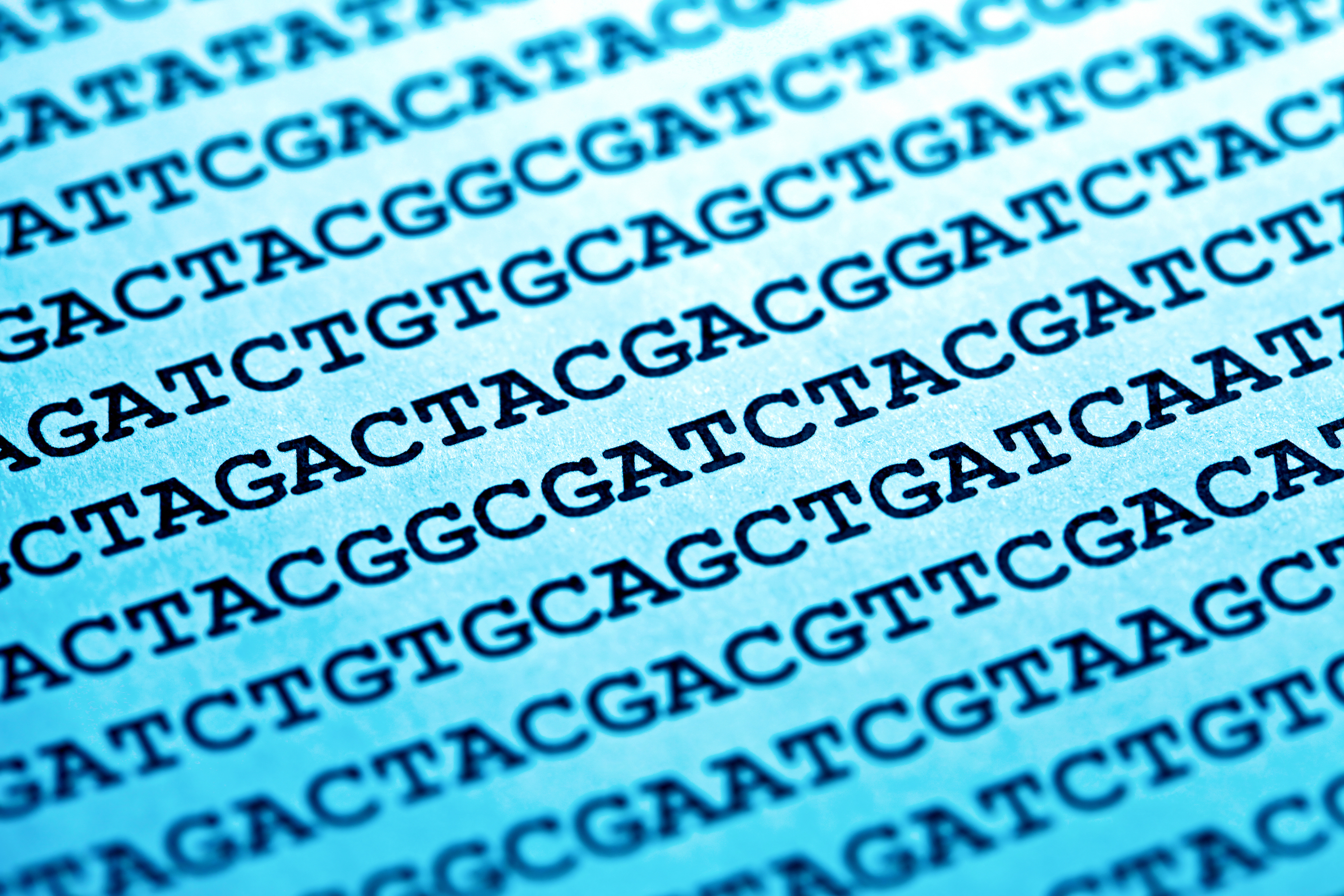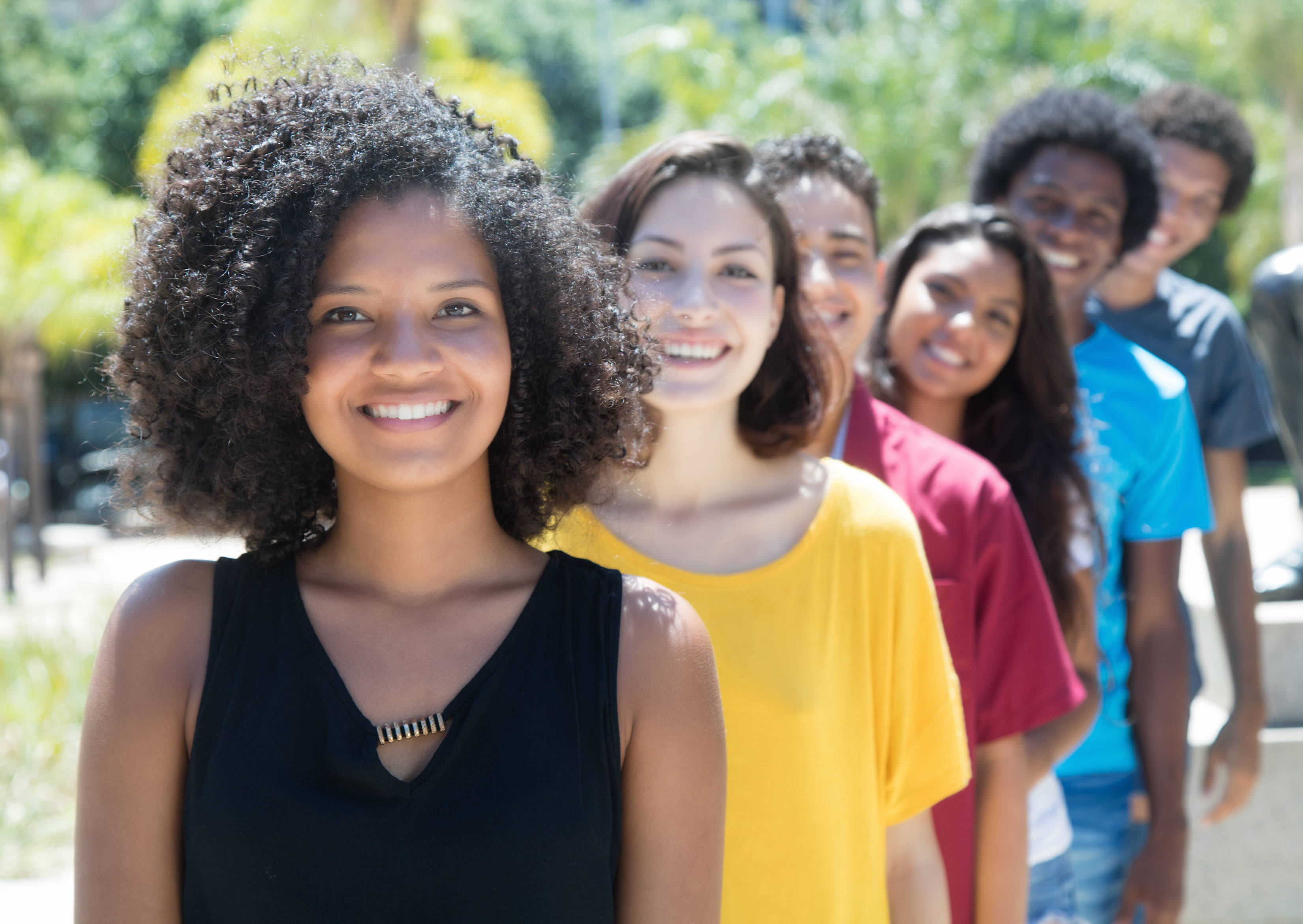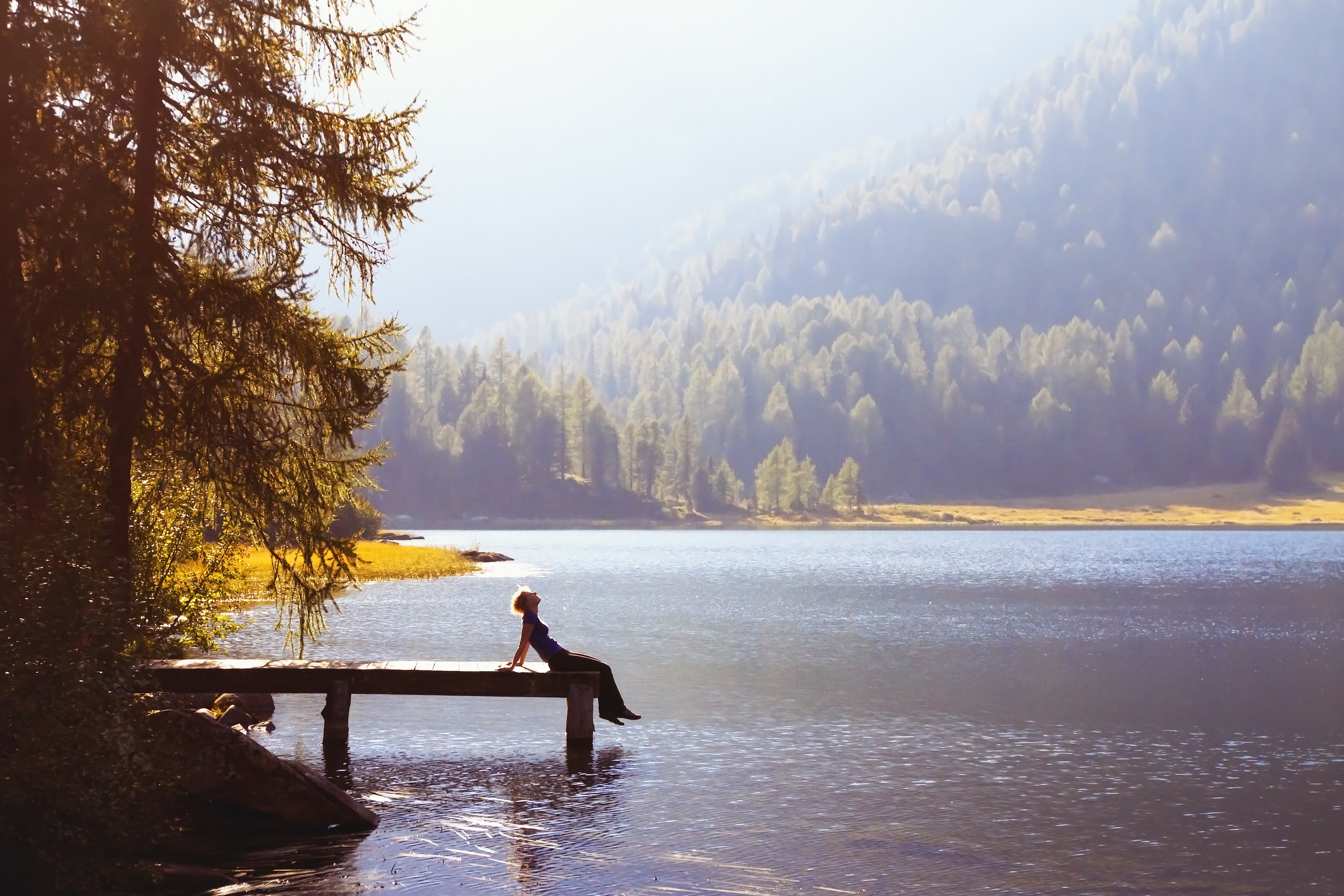The idea that our DNA is not the beginning and end of what makes our brains the way they are can be understood through thought experiment, and asking whether the data exists to answer that question. Monozygotic twins in humans and genetically identical individuals in any other animal species, for example shrimp-like species, literally have exactly the same DNA. Yet, remarkably, despite the fact that monozygotic twins or clones of a certain species of animal are more similar to each other than they are to everybody else, they’re not actually identical, even in their external appearance. They have the same DNA but they are not identical to each other. That alone tells us that our DNA encodes our development and much of what happens to us in life, but it does not determine it. The alphabet encodes all the words in a different language but it doesn’t determine what those words are – and new words appear and disappear all the time in different languages.
This tells us that even if you have an immutable set of instructions to play with, the forming elements, and then the instructions that those elements form, are not deterministic. They are not predictable with 100% accuracy. So that’s the difference between encoding and determining something. A blueprint determines, say, the electrical wiring circuit of an apartment. If I give you the blueprint, you will make an electrical circuit of that apartment exactly the way it is now. The blueprint of DNA encodes the information necessary for the brain wiring programme to run itself.
Is everything random?
So, how come when this programme runs itself, it doesn’t give exactly the same result? How do we know it doesn’t give out the same result? Going back to this idea of monozygotic twins or clones of animals: embryos that are exact clones of each other, that develop at different rates, have slightly different morphologies and so on. Does this mean that everything is random? Well, of course not, because if I take the DNA of a human being, that egg will develop into a human being and not randomly. Every time I try, I will start from human DNA and get a human: I will never, ever get a mouse or a chimpanzee. Not only will I get a human being, I will get a Homo sapiens and not a Neanderthal, for example. A large part of that DNA information restricts the grounds in which those mechanisms that will develop a body, including a brain, can actually play.
It’s not random. It’s not like an open book where anything can happen – this space of variability between a very specific sequence of words in the DNA and the outcome: your body, in this particular case, your brain. Ultimately, your brain, everything you think you feel you do, you imagine, you hope for, everything you think you are and you think others are, every thought, every emotion, every tendency to do something, every subconscious reaction that you have, is your brain. So, if you ask Who am I, the answer is you are your brain and your brain is you.
Who are you and who are we?
The most ancient philosophical question that humankind is ever thought to have asked at the very beginning of its consciousness is Who am I? If I want to understand myself and understand all my specifics as an individual, I would really need to understand my brain. As an individual, I have simultaneously almost instinctive, immediate appreciation that I am part of a collective. Therefore, I don’t think any human being has confusion about the fact that they’re not a gorilla or an orangutan or a dog; yet, there is no human being who does not have the sense of being unique and different.
There’s an adage that goes Remember: you’re special just like everyone else. Objective reality allows us to say that every individual, every sample of this collective, is a unique and slightly different sample. This means that each of us has a unique brain. Even those people who have exactly the same DNA have slightly different brains. Where does that come from? In order to get a brain, you don’t just throw the DNA in a cell and, poof, you get a brain. That cell will have to divide and divide to make millions of cells – trillions of cells if it’s a human being – and those will be very diverse types of cells, very different from one another. So, this process of development entails the translation of the instructions in the DNA into a process.
If I build a model for a house, as an architect, let’s say, and I give it to five different entrepreneurs who are going to build that house, there is no question that in every one of those five houses one wall is going to be less straight or a bit straighter than the other, for example. Similarly, if I have a recipe for a cake and I give this very precise recipe to five different chefs, none of whom have cooked it before, every one of those five different cakes is going to have a slightly different size, slightly different texture, slightly different taste.
That immediately tells us that there is the intervention of a developmental process. In applying the instructions of DNA, in the case of our brain, to turn cells into neurons and glia, to get them to paste, to connect with one another and work, there’s already a level of variability. What is the mechanism that introduces this variability? There’s a number of sources for these mechanisms in this variability. Many of the processes that are encoded in the DNA actually have randomness built into them.
There is a very famous mechanism, or rule, called lateral inhibition. It’s actually a set of mechanisms at the molecular level that works in many different contexts, at many different levels: cells between each other or parts of cells that are running into one another. It is basically a competition between a number of elements as to who is going to become A and who’s going to become B or C or D. The outcome of the competition is that one, or very few elements, become A and all the rest become B or C or D. Which specific element and exactly how many become A and the rest become B doesn’t matter as long as a few become A and most become B. The way DNA encodes this process leaves a lot of wiggle room for who’s going to become A and who’s going to become B.
Imagine we are six friends and we want to buy lunch at work every day. The idea is that any one of us goes to get the lunch on any given day, but we never agree who in advance. The only constant is that one of us goes. One has a bike; another has an electric bike. Someone takes the metro; someone walks. That means that the time at which we get our lunch to eat is going to be slightly different every day or even on days where the same person goes. Exactly the same kinds of things are going on during brain development in this inhibition mechanism, which is the basic rule that the brain follows over and over again. It doesn’t matter which particular entity, which particular cell or part of the cell, actually does the job. It doesn’t matter as long as the lunch is got. And this leaves wiggle room. This is one source of variation.
So, in a way, the instructions themselves encode variation. They encode a probability of outcome, but not the specific outcome itself. So, it’s genetically encoded variability – not because the DNA is different, but because the process that implements the instructions in the DNA is intrinsically a stochastic process. Stochastic means that outcome cannot be predicted with 100% accuracy in advance, and it’s a distribution of possible outcomes. That’s one source. The other source is noise.
Intrinsic random noise
Noise means that there is intrinsic randomness in how molecules move around in the cell: slight changes in how one molecule moves around or the speed at which it’s produced, at the levels of microseconds. These sorts of thermodynamic fluctuations change the rate at which a protein is made or put in the right place or at which an amount of protein accumulates to a point where a cell changes what it’s doing; from growing an axon fast to growing it slow, from growing it straight to turning left or turning right or making a branch of the main wire in order to make those connections. So, those differences, this noise, means that even when you make a specific cell, the whole genetically encoded variation is over. Now, the noise inside of what’s going on in that cell makes it slightly different in my brain and on the left or the right side of the brain of one clone versus another individual who’s a clone of that first individual. The speed with which this cable will grow makes the probability of that cable to connect to other types of cells different in those two different individuals. Now, you have to multiply these sources of noise and variation by millions, billions and trillions, depending on the size of the brain that is self-organising and developing.
The way brain development works makes variation inevitable. It’s not a bug: it’s a feature. One tends to think that the ideal thing is to find a precise set of instructions so exactly the same thing will happen every time. If you’re developing a living organism, that would be the bug; the feature would be to ensure that no two organisms are exactly identical. So, why do we have to be different from one another? Why can’t we all be the same? It’s because we were not created and we were not designed. We evolved, and evolution relies on selection. If we go back to this notion of selection of random variation: if all the individuals were exactly the same, had the same DNA, gave rise to the same kind of individual, and if suddenly the environment changed to disfavour the features of this individual, that population would become entirely extinct and its DNA would disappear, so it’s intrinsic in the way animals evolved. The same DNA gives rise to different individuals because then those individuals could resist changes to the environment. This would be the teleological way of thinking about it, but more accurately what has happened is that when genomes that give rise to variation evolved, those genomes became more robust to being eliminated from the population. A genome that can create a diversity of individuals increases its probability of passing on to the next generation under different environmental conditions. This is why species like ours can very quickly spread across the entire globe and be able to successfully conquer different environmental niches and, unfortunately, eventually destroy them. Let’s hope we wake up and stop doing that. If we don’t, paradoxically, we would be paying the price of this incredible robustness of what eventually became the human genome.
Variation is written into our DNA and into the processes of development that our DNA instructs. Our DNA is not the blueprint of our brain. Our DNA is the recipe to let our brain cook itself, to make itself right. If that recipe says boil water for 30 minutes and then add this pasta and a pinch of salt, then everyone’s going to interpret “pinch” slightly differently because our DNA doesn’t say add exactly 2.753 milligrams of salt.
Having developed a variety of brains ensuring this individuality from the outset, a big part of the final steps of development is the idea that the environmental input sculpts those networks that are working, and changes them according to this input. But the environmental input is completely unpredictable. There is no way to know what kind of environment a developing embryo of any specific animal will face. It’s impossible. Will it be cold? Will it be warm? Will the temperature drop or rise? Will there be predators?
That results in even more variation of the variation, and then, of course, we have the whole process of experiences during life which would change our memories, change our tendencies, modify our preferences. A thought I got listening to a colleague of mine called Kevin Mitchell give a talk is the idea that at some point we reduce the whole nature nurture debate into genome versus environment, DNA versus environment. We now realise that it's a DNA versus development environment, and that they’re actually all in a circle of interactions that are impossible to break into pieces. Nature is more than just DNA. The environment has an input into nature, but does nature have an input into the environment?
Imagine any animal you want. That animal has a certain inborn nature, with all of its variations. The environment reacts, so if it’s a mouse or a rat, it might burrow in the ground and change its own environment. So, in many ways, nature acts on nurture, nurture acts back on nature, and you have a circle of interactions that persist throughout the life of the organism – our innate tendencies – and shape the environment we live in.
Some people, for reasons they don’t understand, have a tendency towards living in the mountains rather than near the sea that might have something to do with the way their lungs work. They will make that choice just because they feel comfortable, though they might not realise why exactly. Of course, living in that environment changes their experience and vice versa. These innate tendencies shape the environment we choose to live in, and the environment we live in then feeds back on our innate tendencies in this ever-continuing interactivity.
You are an individual the moment you are born, because the developmental mechanisms that drive the formation of your brain encode for and also allow for unpredictable variability. You will then interact with an unpredictable environment in which you will influence, and which will, in turn, influence you. Your development, your adult life and eventually your aging are a continuous process of sculpting that individuality. You’re born different and you continue to modify that difference to make it more or less similar to others, and in a trajectory that is never 100% predictable and deterministic.
The notion of free will
Unpredictability might hold the key to the scientific explanation for free will. It’s very interesting to debate whether free will exists in a useful sense – if my actions are unpredictable to others – because I would suggest that my freedom only makes sense in the context in which I use that freedom. So, as a human being, it only makes sense in the social and the environmental context that I live in. If my actions are not 100% predictable to others, then from the perspective of those others, I am making free decisions. I have agency because they can’t tell what I’m going to do all the time. So, my freedom, my agency then, is not only something I feel personally, even if it’s a delusion I feel, but something others confer upon me. Therefore, the way they will interact with me takes into account that unpredictability. The way I interact with them takes into account not only their unpredictability but the fact that I know that I can surprise them. Therefore, even if it’s a delusional sense of agency, it has a very real impact on how we end up behaving towards others and towards the environment, and from my perspective, that is enough to suggest that I’m a free agent.
As an individual, whether I’m a human being or a fruit fly, I have agency over my actions from that perspective. If I happen to be a self-conscious being, like a human, I can take pride in that agency, but it also means that I have responsibility towards that agency. I think that notion of freedom and responsibility that we have a high sense of in our society is essential for the protection of what Churchill called “the worst form of government except for all the others” – democracy. If we want to nurture it and keep it and figure out better things for our collective in the future, this productive tension between freedom and responsibility is really essential. I think we must accept that neuroscience and science in general has something to say about the origins of free will. If neuroscience, in particular, could contribute that sort of useful, didactic, practical notion of what it means to be free and responsible, then I think this is a beautiful place where understanding brain development might have a fundamental impact on the ultimate psychosocial and philosophical question, which is Who am I and what am I supposed to do?



